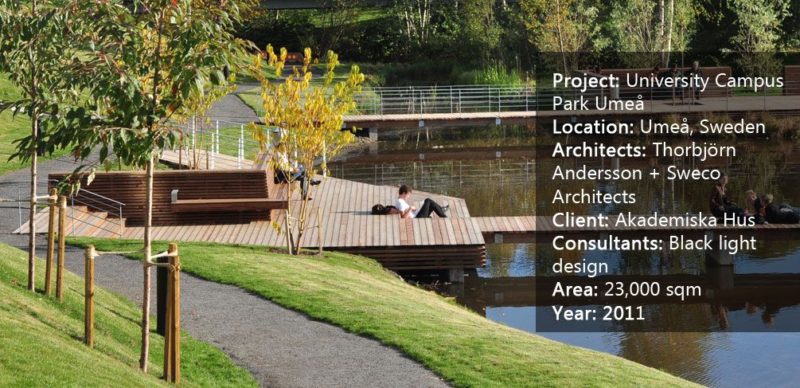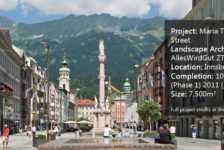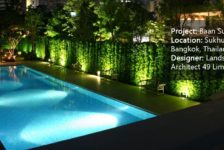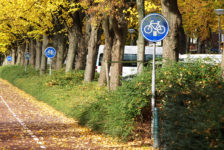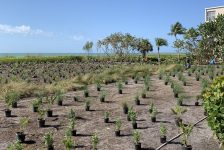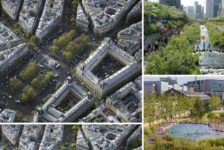A Fireplace for Children, by Haugen Zohar Arkitekter, in Skjermveien Kindergarten, Trondheim, Norway. Landscape architecture is usually associated with grand scale. Landscape design signifies decisions that may have implications on an urban or even territorial level. However, there are small landscape projects or rather, installations, which function like gentle gestures to enhance outdoor, spatial experience. A small cabin in the town of Trondheim in Norway belongs to this type of project. The structure serves as a sheltered fireplace for children. It complements the playground equipment that already exists on the site. It is used for playing, storytelling and enjoying being near the fire.
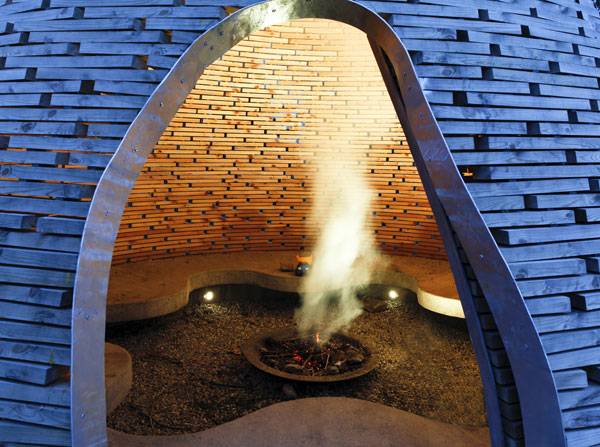
Photo courtesy of Haugen/Zohar Arkitekter
A Fireplace for Children
The design team, Haugen-Zohar Arkitekter, has managed to combine in this small intervention several qualities which are hard to find in many projects:
- Upcycling of Materials
- Incorporating the traditions of Norwegian turf housing (Goahti) and Norwegian log joinery
- Low cost
- Sustainability
- Creating a landmark and a meeting point for the children as well as their families
- Reuse of Materials in an Imaginative Way
The tight project budget did not allow for any luxuries. The short wooden pieces that form the surrounding “shell” have been collected from a construction site nearby. Eighty layered circles of various diameters create a whimsical form.

Photo courtesy of Haugen/Zohar Arkitekter
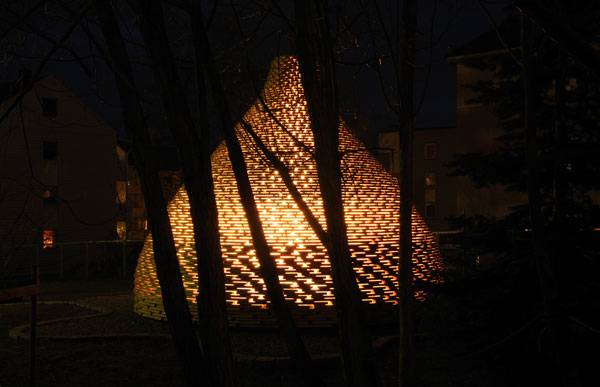
Photo courtesy of Haugen/Zohar Arkitekter
Norwegian Tradition Reinvented in a New Intervention
The Norwegian turf houses called, “Goahti” are a beautiful example of how to live in harmony with nature. All materials used for this type of construction are found locally. The vegetation that ravels the wooden structure ensures its protection and insulation. The Fireplace for Children pays tribute to the “Goahti” in terms of shape and construction philosophy. However, it maintains its contemporary character.

Photo courtesy of Haugen/Zohar Arkitekter
Limited Resources, Sustainability and Great Inspiration
There is no need for quality architecture to be expensive. The Fireplace for Children absolutely proves it. The project has been awarded with more than one prize and with citations such as Trondheims Byggeskikkspris 2010, AR Awards 2009, Project of the year 2010. The construction is totally sustainable as one can easily observe. There is no need for maintenance or energy consumption for the Fireplace to function. Fire is a source of light and heat, during the night. The structure should not need any maintenance unless there is some sort of damage. This is a quality that few projects seem to achieve. It certainly contributes to that the simple and recreational character of the project. Another astonishing example of sustainability and use of natural resources is described in the LAN article: Saving Wildlife Through Building Community Led Eco-lodges in Cambodia
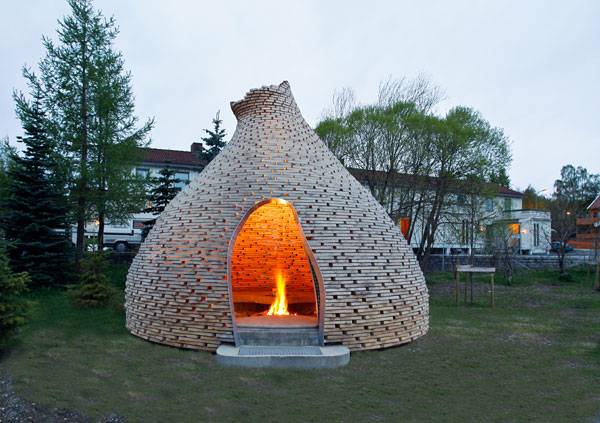
Photo courtesy of Haugen/Zohar Arkitekter
A Landmark and a Space for Play and Reverie
The structure itself bears many qualities that have already been analyzed. All these advantages would mean nothing if the project had not been so warmly embraced by the children and the community. It has become a landmark, a meeting point and a place where stories beside the fireplace become more fascinating than ever. Given that the weather conditions in Norway are quite harsh most of the time, the success of an outdoor installation acquires added value. The importance of playing, especially in a natural environment, is analyzed excellently in Ashley Penn’s article: What are the Benefits of Natural Play? The Fireplace for Children is a place that anyone, regardless of their age, could enjoy. It approaches the sense of warmth and protection of a womb, and at the same time the joy of coexisting and sharing a beautiful place with others. Should this not be the essence of every act of building? If an architect’s mind is set to meaningful, human-centered design, the answer is without any doubt, “Yes”. Leave a comment
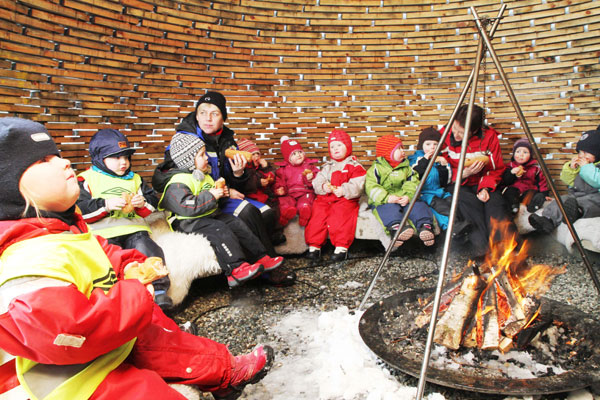
Photo courtesy of Haugen/Zohar Arkitekter
Full Project Credits For The Fireplace for Children
Project Name: Fireplace for Children Designers: Haugen Zohar Arkitekter Location: Skjermveien Kindergarten, Trondheim, Norway Dimensions: 5.2 x 4.5 meters, wooden construction Date of Completion: 2009 Client: Trondheim Municipality 3D consultancy: Scenario Architecture Rapid prototyping: Espen Bærheim Contractor: Pan Landskap A S Photograph: Jason Havneraas & Grethe Fredriksen Website: www.hza.no Twitter: www.twitter.com/haugen_zohar Recommended Reading:
- Urban Design by Alex Krieger
- The Urban Design Handbook: Techniques and Working Methods (Second Edition) by Urban Design Associates
Article by Eleni Tsirintani Return to Homepage
Published in Blog


